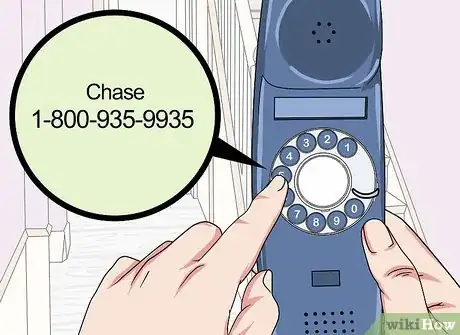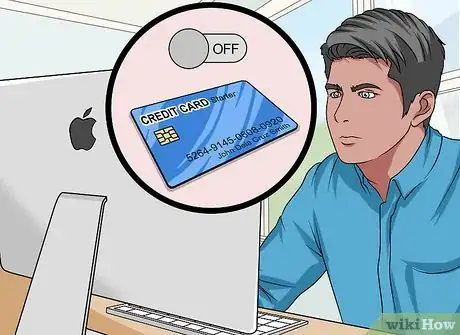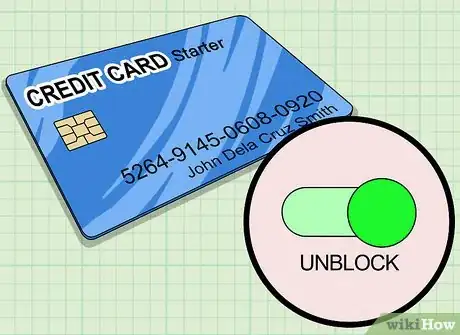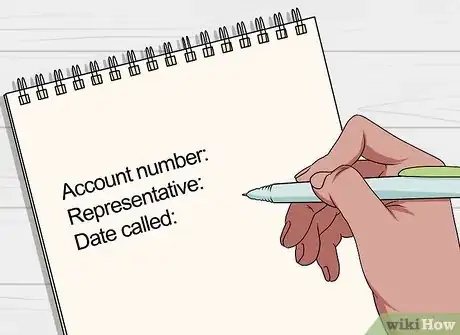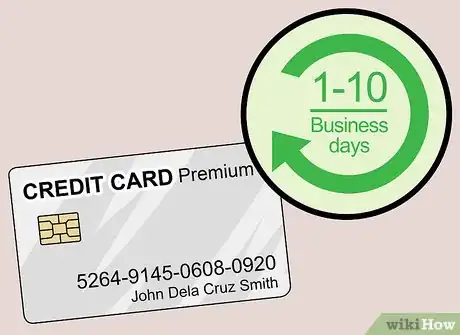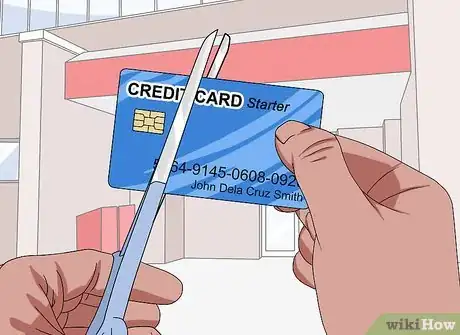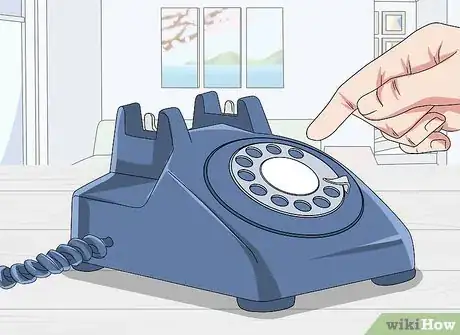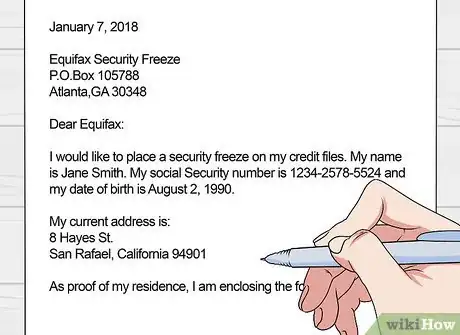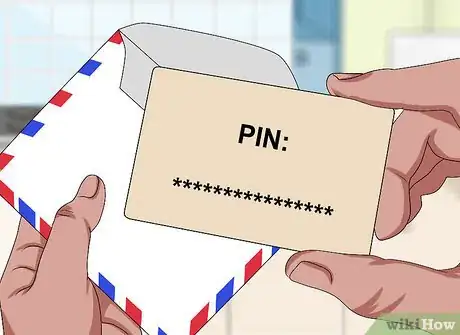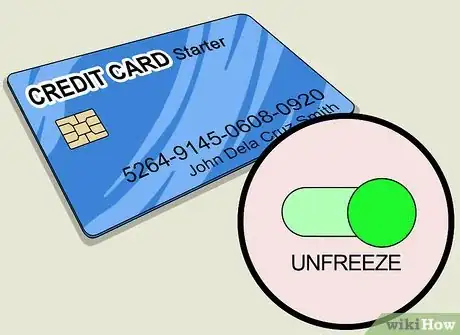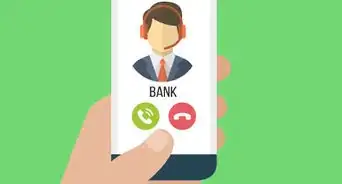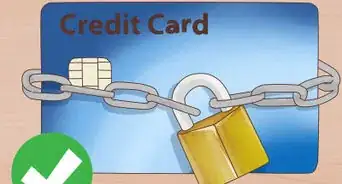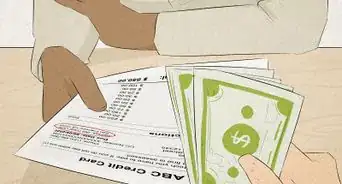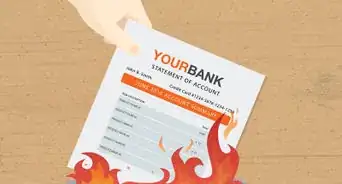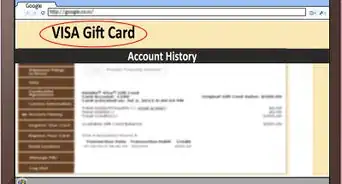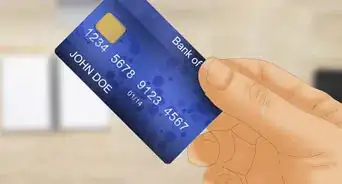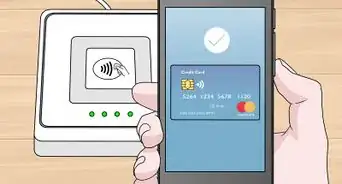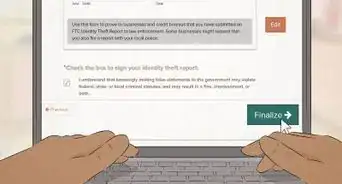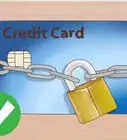This article was co-authored by Derick Vogel. Derick Vogel is a Credit Expert and CEO of Credit Absolute, a credit counseling and educational company based in Scottsdale, Arizona. Derick has over 10 years of financial experience and specializes in consulting mortgages, loans, specializes in business credit, debt collections, financial budgeting, and student loan debt relief. He is a member of the National Association of Credit Services Organizations (NASCO) and is an Arizona Association of Mortgage Professional. He holds credit certificates from Dispute Suite in credit repair best practices and in Credit Repair Organizations Act (CROA) competency.
There are 11 references cited in this article, which can be found at the bottom of the page.
This article has been viewed 36,749 times.
If your credit card goes missing, you’ll need to act quickly to prevent fraudulent activity. Fortunately, temporary blocks are quickly becoming an industry standard. If your creditor allows you to temporarily deactivate your card, simply call them or go online to block it. Turn it back on if your card turns up, or report it lost or stolen if you can’t find it within 2 days. If necessary, get a new card with new numbers. If you’re concerned about identity theft, you can also freeze your credit, which will prevent anyone from opening a new line of credit in your name.
Steps
Blocking a Card Temporarily
-
1Call your creditor or log on to your online account. Many credit issuers allow customers to temporarily block a missing card. If your creditor offers this feature, visit their website or open your mobile app. You can also call your creditor and have a customer service representative make the switch.[1]
- If you have an online account, you'll only need to log into the website. If you call customer service, you'll need to provide your account number along with identifying information, such as your Social Security number.
- You can reach Chase at 1-800-935-9935 or visit https://www.chase.com.
- Call Capital One at 1-877-383-4802 or go to https://www.capitalone.com.
- Call American Express at 1-800-528-4800 or visit https://www.americanexpress.com.
- If you have another creditor, look online to find their customer service line.
-
2Go to account management and switch off your card. After logging on to your online account or mobile app, find the account or card management section. Look for a link titled “Misplaced Card,” “Lock Your Card,” or something similar. Clicking the link will direct you to a page where you can simply toggle an on/off switch.[2]Advertisement
-
3Report suspicious activity immediately. If your card is missing or stolen, monitor your statements closely, even if you’ve temporarily blocked it. Contact your creditor if you see any strange charges, no matter how small.[3]
- Thieves often make a tiny purchase to see if you’ll notice before making large charges.
-
4Unblock your card if you find it. You can quickly reactivate your card if you find it in the sofa cushions or under your car seat. Head to your online account or mobile app, or call customer service. Toggle the on/off switch if you’re handling it yourself, or ask the customer service representative to reactivate your card.[4]
- If you have an online account, simply log into your creditor's website. If you call customer service, provide your account number and identifying information.
-
5Report your card as lost if you can’t find it within 2 days. Temporarily blocking your card is no substitute for reporting it as lost or stolen. If it doesn’t turn up within 2 business days, call your creditor and let them know your card is gone for good. Ask the representative for a replacement with a new number.[5]
- If you report your lost card before any fraudulent charges are made, you won’t be liable for any losses. If you report it within 2 business days, you’ll only be liable for $50 (USD) if fraudulent charges were made before you turned off the card. If you wait longer than 2 business days and fraudulent charges are made, your maximum loss could be $500.
Replacing a Lost or Stolen Card
-
1Ask your creditor for a new card and account number. You can call customer service or report your card as stolen and request a replacement online. Fill out the online form or ask the customer service representative for a replacement. Verify that your new card will have a new set of numbers.[6]
- If you call customer service, write down the name of the person who helps you. Keep their name and the date you called in your records.
-
2Ask if they update merchants that charge recurring payments. Creditors often automatically send your updated credit card information to companies that make regular charges. If you used the lost card to pay bills, you won’t have to go through the hassle of contacting each company yourself.
- If an automatic updater service makes you uncomfortable, ask the customer service representative if you can disable it.
- If your creditor doesn’t update merchants automatically, you’ll have to update your recurring payments before your bills are due. Call utility providers and other companies that charge recurring payments or log into your accounts on their websites to update your billing information.
-
3Send a written letter to your creditor. While you’re on the phone with your creditor, ask for a mailing address where you can send a written notice. Write a letter that includes your name, address, the old card number, the date your card went missing, the date you requested a replacement, and details about any suspicious transactions.[7]
- For example, you might write, "I am writing to dispute a fraudulent charge on my account in the amount of $98.24 dated 1/2/2018 at 3:15 p.m. I reported this card as lost or stolen via telephone at 4 p.m. on 1/2/2018, and spoke to Jane Doe. I did not make this charge, and am requesting that it be removed, that my account be credited, and that I receive a corrected statement."
- Following up with a written letter provides a paper trail. Suppose your lost card isn't deactivated when you requested and a thief makes fraudulent charges. You'll have proof that you fulfilled your responsibilities and shouldn't be liable for those charges.
-
4Expedite shipment if you need a new card in a hurry. Depending on your creditor, you’ll have to wait anywhere from 24 hours to 10 business days for a new card. When you call for a replacement, ask how long it’ll take to arrive. If you need it sooner, ask customer service for the account number so you can make online purchases, or ask them about rush delivery.[8]
- Some companies expedite replacement cards automatically, so you might receive it within 2 days. If not, you might have to pay up to $30 for overnight or priority shipping.
-
5Ask to see the results of your creditor's investigation. If any suspicious charges were made, your creditor will conduct an investigation within 10 business days. Follow up with them after that length of time and ask about the investigation’s status. Ask if results are available or when they will become available.[9]
- Creditors are legally required to share their findings with you. While many cases of credit card fraud are beyond your control, the information could help you lower your risk in the future.
Freezing Your Credit
-
1Opt for a freeze instead of a lock. Credit reporting companies offer free or lower cost credit locks, which are not the same as a credit freeze. A credit lock is just a contractual agreement between you and a reporting bureau. While locks and freezes essentially do the same thing, credit freezes are guaranteed by state law, so you'll have absolutely no risk of financial liability.[10]
- If you freeze your credit and someone opens a new line of credit in your name, you’ll be legally protected from any financial liability. A credit lock doesn’t offer this same legal protection.
- Furthermore, a lock contract with the reporting company could include undesirable terms. For example, a credit lock agreement could prohibit you from participating in a class action lawsuit if something goes wrong. Freezes do not involve a contractual agreement, and the reporting bureau would be liable for any losses.
- Note that credit freezes and locks do not affect your credit score.
-
2Call each of the credit reporting companies. In order to freeze your credit, you have to contact all 3 nationwide credit reporting companies. Inform the customer service agent that you want a credit freeze. You’ll need to provide your name, date of birth, Social Security number, and other personal information.[11]
- Call Equifax at 1-800-349-9960 or visit https://www.freeze.equifax.com/Freeze/jsp/SFF_PersonalIDInfo.jsp.
- Call Experian at 1‑888‑397‑3742 or visit https://www.experian.com/freeze/center.html.
- Call TransUnion at 1-888-909-8872 or visit https://www.transunion.com/credit-freeze.
-
3Pay each reporting company a fee. Fees depend on your location and are typically between $5 and $10. In some states, credit freezes are free if you’re 65 or older.[12]
-
4Send written freeze requests to each reporting agency. When you’re on the phone with the reporting companies, ask each for a mailing address. If you filed online, check their website for the mailing address that processes freeze requests. Include your name, address, date of birth, and the date that you requested the freeze.[13]
- If you’re the victim of identity theft, include a police report with the letter you send to the reporting companies.
- A written letter will provide proof that you requested a freeze on a certain date. If something goes wrong, such as someone opening a line of credit in your name, it's helpful to have documentation that you exercised due diligence. You'll be able to prove that you shouldn't be liable for fraudulent charges because the reporting bureau failed to execute your freeze request.
-
5Keep your confirmation letters and PINs safe. Each reporting company will send a written confirmation. It will include instructions about lifting the freeze and a PIN you’ll need in order to lift it. Store these documents in a secure place, such as a safe.[14]
-
6Lift the freeze if you’re applying for new credit, a lease, or a job. A credit freeze will prevent anyone from running an inquiry into your credit history. While freezes expire after 7 years in some states, they remain in place indefinitely in the vast majority of states. If you apply for a new line of credit, job, or apartment lease, you’ll need to lift the freeze so the company can run an inquiry.[15]
- If you'll frequently be applying for lines of credit, leases, and jobs, you might want to lift your security freezes permanently instead of paying fees to temporarily thaw them every few months.
- Ask a new creditor, leasing company, or potential employer which reporting company they’ll use to check your credit. That way, you can lift the freeze with that company alone instead of having to pay fees to have all 3 lift your freeze.
- Follow the instructions in the confirmation letters to lift the freeze. You’ll call the reporting company or go online, provide your personal information and PIN, and specify the dates you want the freeze thawed.
Community Q&A
-
QuestionWill replacing or losing a credit card affect my credit score?
 DonaganTop AnswererIf you have to close your account and open a new account, that could hurt your score a little.
DonaganTop AnswererIf you have to close your account and open a new account, that could hurt your score a little.
References
- ↑ https://www.nytimes.com/2016/02/04/your-money/a-way-to-lock-lost-debit-cards-from-a-big-bank.html
- ↑ https://www.nerdwallet.com/blog/credit-cards/citi-quick-lock-lost-credit-card/
- ↑ https://www.consumerfinance.gov/about-us/blog/four-steps-you-can-take-if-you-think-your-credit-or-debit-card-data-was-hacked/
- ↑ https://www.nerdwallet.com/blog/credit-cards/citi-quick-lock-lost-credit-card/
- ↑ https://consumer.ftc.gov/articles/lost-or-stolen-credit-atm-debit-cards
- ↑ https://money.com/collection-post/suspicious-charge-credit-debit-card/
- ↑ https://www.consumerfinance.gov/ask-cfpb/how-do-i-send-my-credit-card-company-a-billing-error-notice-en-2072/
- ↑ https://www.nerdwallet.com/blog/credit-cards/how-soon-can-i-get-my-new-credit-card/
- ↑ https://www.consumerfinance.gov/about-us/blog/four-steps-you-can-take-if-you-think-your-credit-or-debit-card-data-was-hacked/
- ↑ https://www.consumerreports.org/credit-protection-monitoring/why-a-free-credit-freeze-is-better-than-a-credit-lock/
- ↑ https://www.consumer.ftc.gov/articles/0497-credit-freeze-faqs
- ↑ https://www.consumer.ftc.gov/articles/0497-credit-freeze-faqs
- ↑ https://www.oag.ca.gov/idtheft/facts/freeze-your-credit
- ↑ https://www.consumer.ftc.gov/articles/0497-credit-freeze-faqs
- ↑ https://www.consumer.ftc.gov/articles/0497-credit-freeze-faqs
- ↑ https://www.moneyadviceservice.org.uk/en/articles/how-to-check-your-credit-report
